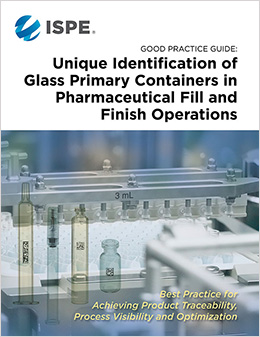Good Practice Guide: Unique ID of Glass Primary Containers

Published: May 2024
Pages: 86
Many current challenges facing the pharmaceutical industry revolve around increasing product complexity, reduced batch sizes, and higher flexibility requirements, coupled with increased requirements for product traceability, both internally and by regulatory bodies. Additionally, as the industry moves toward a continuous manufacturing process model, defining the production stage at which something started to go wrong proves to be challenging.
One technology that helps to address these factors is uniquely coded containers that allow for traceability at the individual container level.
There are other strong business drivers for adopting uniquely coded containers. These include improved batch visibility and accountability as well as streamlined investigations into deviations during fill and finish operations. These benefits can mitigate the direct financial impact from missed revenue and benefit patients by potentially resulting in fewer drug shortages.
The ISPE Good Practice Guide: Unique Identification of Glass Primary Containers in Pharmaceutical Fill and Finish Operations describes processes for applying a Unique Identifier (UID) on each primary parenteral container. The Guide outlines best practices for developing, implementing, and managing a traceability project across one or more processes.
The unique identification of single glass containers described in this Guide represents a technological advancement that can support the robustness of pharmaceutical manufacturing processes. It encompasses all types of glass primary containers made from tubular glass or molded glass for the containment of pharmaceutical liquids or lyophilized products. Covered topics include:
- UID methods/technologies for the different container types
- The UID structure
- Performance requirements for glass containers
- Barcode readability and verification
- Radio-Frequency Identification (RFID) technologies
- Reading different formats
- Automated inspection processes
- Traceability in processes
This Guide also discusses how to manage the container UID without affecting package serialization required by the EU and FDA.
Traceability in any process entails two essential components – the UID and the management and storage of the data collected, generated, and associated with the UID as it travels through the different steps of a process or line. This Guide leads the user through the key considerations in data management across different processes, data systems architecture, and validation.
The development and compilation of this Guide involved a cross functional team of industry experts and professionals engaged in parenteral/injectable medicine manufacturing. The working groups included industry competitors who worked together to establish a common approach and provide a balanced, industry-wide perspective on the use of containers with unique identities.
